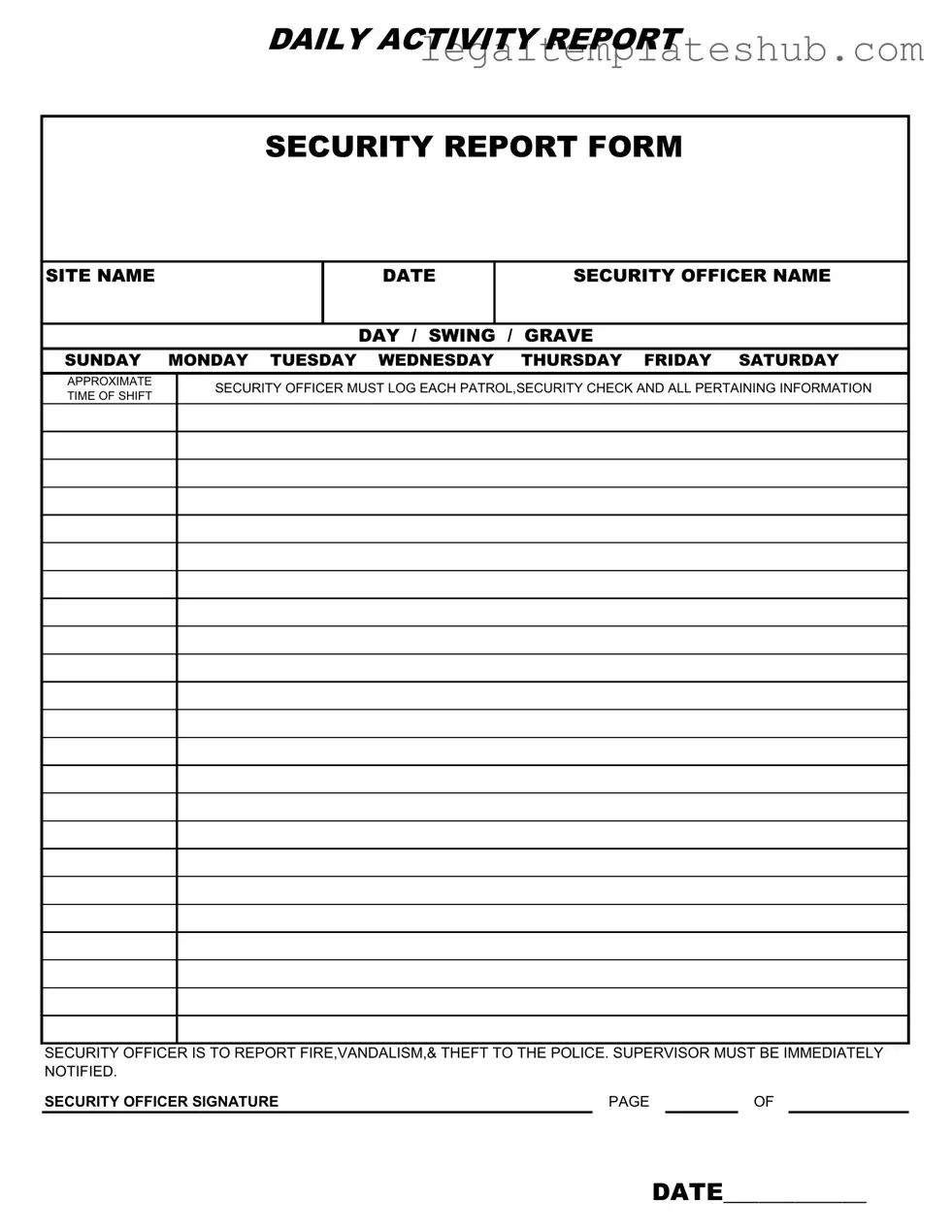Blank Security Guard Daily Report Sample PDF Form
The Security Guard Daily Report Sample form is a crucial tool for documenting daily activities and incidents at a security site. This form helps security officers log patrols, security checks, and any relevant information, ensuring that important events like fires, vandalism, or theft are reported promptly. To streamline your reporting process, fill out the form by clicking the button below.
Access Editor
